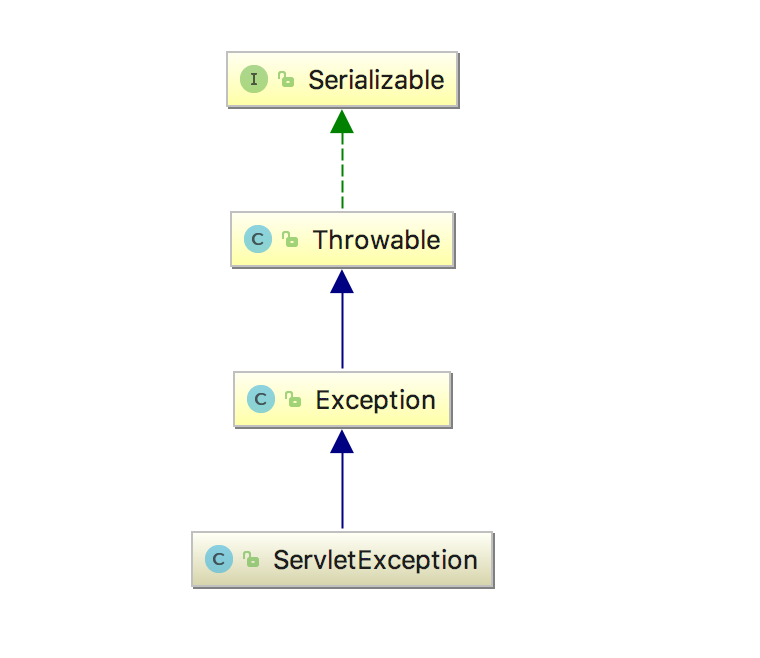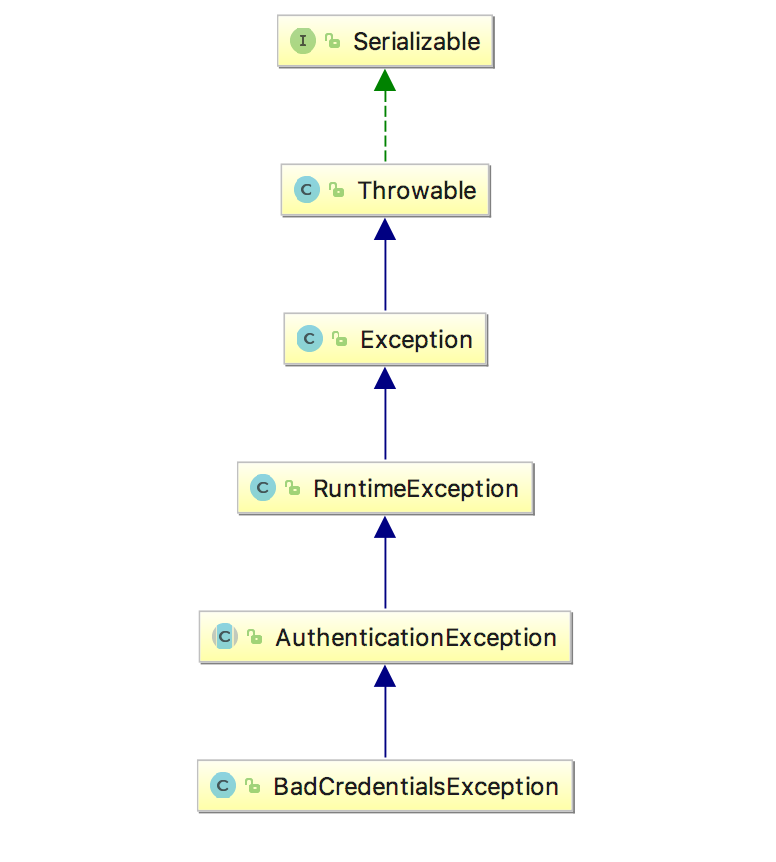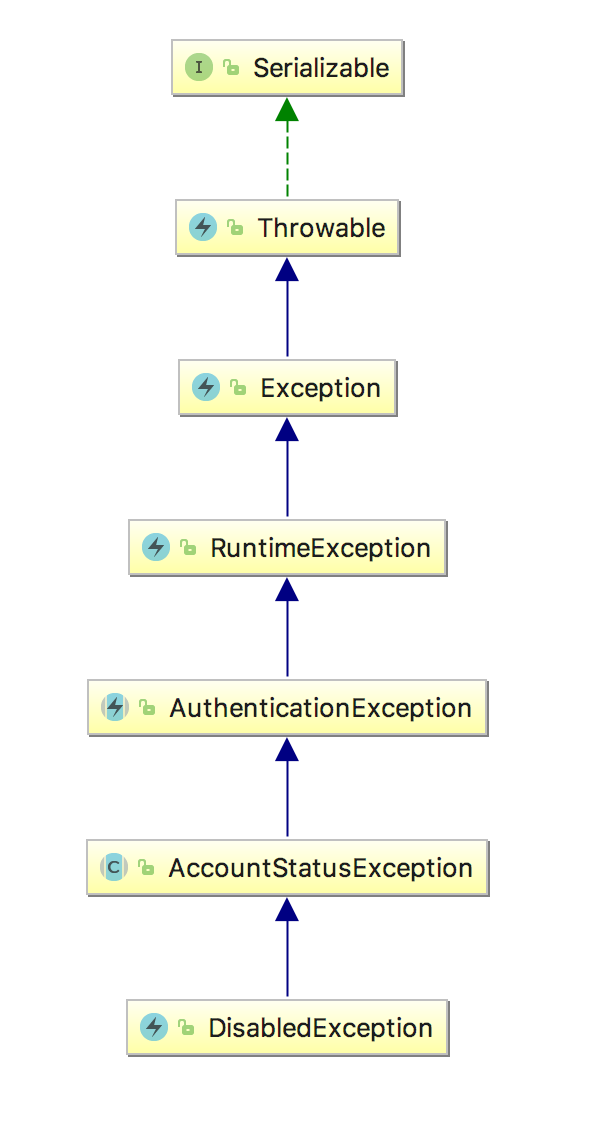在使用Spring Security的过程中,我们会发现框架内部按照错误及问题出现的场景,划分出了许许多多的异常,但是在业务调用时一般都会向外抛一个统一的异常出来,为什么要这样做呢,以及对于抛出来的异常,我们又该如何分场景进行差异化的处理呢,今天来跟我一起看看吧。
一个登陆场景下的外层代码
@PostMapping("/login")
public void login(@NotBlank String username,
@NotBlank String password, HttpServletRequest request) {
try {
request.login(username, password);
System.out.println("login success");
} catch (ServletException authenticationFailed) {
System.out.println("a big exception authenticationFailed");
}
}
request.login(username,password)跳入到了HttpServlet3RequestFactory类中,点击去发现login方法只是统一向外抛出了一个ServletException异常。
public void login(String username, String password) throws ServletException {
if (this.isAuthenticated()) {
throw new ServletException("Cannot perform login for '" + username + "' already authenticated as '" + this.getRemoteUser() + "'");
} else {
AuthenticationManager authManager = HttpServlet3RequestFactory.this.authenticationManager;
if (authManager == null) {
HttpServlet3RequestFactory.this.logger.debug("authenticationManager is null, so allowing original HttpServletRequest to handle login");
super.login(username, password);
} else {
Authentication authentication;
try {
authentication = authManager.authenticate(new UsernamePasswordAuthenticationToken(username, password));
} catch (AuthenticationException var6) {
SecurityContextHolder.clearContext();
throw new ServletException(var6.getMessage(), var6);
}
SecurityContextHolder.getContext().setAuthentication(authentication);
}
}
}
但是在ProviderManager类中的public Authentication authenticate(Authentication authentication) throws AuthenticationException {}
public Authentication authenticate(Authentication authentication) throws AuthenticationException {
Class<? extends Authentication> toTest = authentication.getClass();
AuthenticationException lastException = null;
Authentication result = null;
boolean debug = logger.isDebugEnabled();
Iterator var6 = this.getProviders().iterator();
while(var6.hasNext()) {
AuthenticationProvider provider = (AuthenticationProvider)var6.next();
if (provider.supports(toTest)) {
if (debug) {
logger.debug("Authentication attempt using " + provider.getClass().getName());
}
try {
result = provider.authenticate(authentication);
if (result != null) {
this.copyDetails(authentication, result);
break;
}
} catch (AccountStatusException var11) {
this.prepareException(var11, authentication);
throw var11;
} catch (InternalAuthenticationServiceException var12) {
this.prepareException(var12, authentication);
throw var12;
} catch (AuthenticationException var13) {
lastException = var13;
}
}
}
if (result == null && this.parent != null) {
try {
result = this.parent.authenticate(authentication);
} catch (ProviderNotFoundException var9) {
;
} catch (AuthenticationException var10) {
lastException = var10;
}
}
if (result != null) {
if (this.eraseCredentialsAfterAuthentication && result instanceof CredentialsContainer) {
((CredentialsContainer)result).eraseCredentials();
}
this.eventPublisher.publishAuthenticationSuccess(result);
return result;
} else {
if (lastException == null) {
lastException = new ProviderNotFoundException(this.messages.getMessage("ProviderManager.providerNotFound", new Object[]{toTest.getName()}, "No AuthenticationProvider found for {0}"));
}
this.prepareException((AuthenticationException)lastException, authentication);
throw lastException;
}
}
这里就涉及到了多态的知识点,异常的多态。如子异常AccountStatusException都可以向上转型为统一的验证异常AuthenticationException。
在设计之初的时候,验证类统一的父级异常是AuthenticationException。然后根据业务需求向下拓展出了很多个场景性质的异常,可能有十个、一百个、一千个。
但是这些具体的场景异常都是从AuthenticationException延伸出来的。
在这个验证登陆的方法中,会验证各种场景下登陆是否合法,就有可能出现很多的异常场景,诸如:
- 密码不正确 BadCredentialsException
- 账号是否被锁定 LockedException
- 账号是否被禁用 DisabledException
- 账号是否在有效期内 AccountExpiredException
- 密码失效 CredentialsExpiredException
...几十个几百个异常,如果每个都需要事无巨细的抛出,那你需要在方法后面写几百个异常。
但是你会发现在验证方法那里统一抛出的是他们的统一父类AuthenticationException,这里用到的就是自动的向上转型。
到业务层我们拿到AuthenticationException后,需要进行对特定场景下的业务处理,如不同的异常错误返回提示不一样,这个时候就需要用到向下转型。
Throwable throwable = authenticationFailed.getRootCause();
if (throwable instanceof BadCredentialsException) {}
如果父类引用实际指的是凭证错误,则进行密码错误提示,这里又有一个骚操作,ServletException和AuthenticationException是两个框架下的顶级父级别的异常,两个怎么建立联系,直接将两个都统一转为Throwable可抛出的祖先异常,这样向下都可以转成他们自己了,以及各自场景下的所有异常了。
两个场景下的异常类关系图谱
ServletException

ServletException可以向上转型为Throwable
BadCredentialsException,密码错误

BadCredentialsException可以向上转型为Throwable
账号被禁用,DisabledException

DisabledException可以向上转型为Throwable
怎么转过去的?
public void login(String username, String password) throws ServletException{
...
catch (AuthenticationException loginFailed) {
SecurityContextHolder.clearContext();
throw new ServletException(loginFailed.getMessage(), loginFailed);
}
}
// 在捕获到异常之后会构建一个ServletException并将AuthenticationException统一的包装进去,比如说内部报了BadCredentialsException,那么在这里就会向上转型为Throwable
public ServletException(String message, Throwable rootCause) {
super(message, rootCause);
}
// 在Throwable类中会将最下面冒出来的异常传给cause,getRootCause就能获得异常的具体原因
public Throwable(String message, Throwable cause) {
fillInStackTrace();
detailMessage = message;
this.cause = cause;
}
// Throwable向下转型BadCredentialsException
if (throwable instanceof BadCredentialsException)
调整后的代码
在外层根据不同异常而做不同的业务处理的代码就可以改造为如下
@PostMapping("/login")
public void login(@NotBlank String username,
@NotBlank String password, HttpServletRequest request) {
try {
request.login(username, password);
System.out.println("login success");
} catch (ServletException authenticationFailed) {
Throwable throwable = authenticationFailed.getRootCause();
if (throwable instanceof BadCredentialsException) {
System.out.println("user password is wrong");
}else if (throwable instanceof DisabledException){
System.out.println("user is disabled");
}else {
System.out.println("please contact the staff");
}
}
}